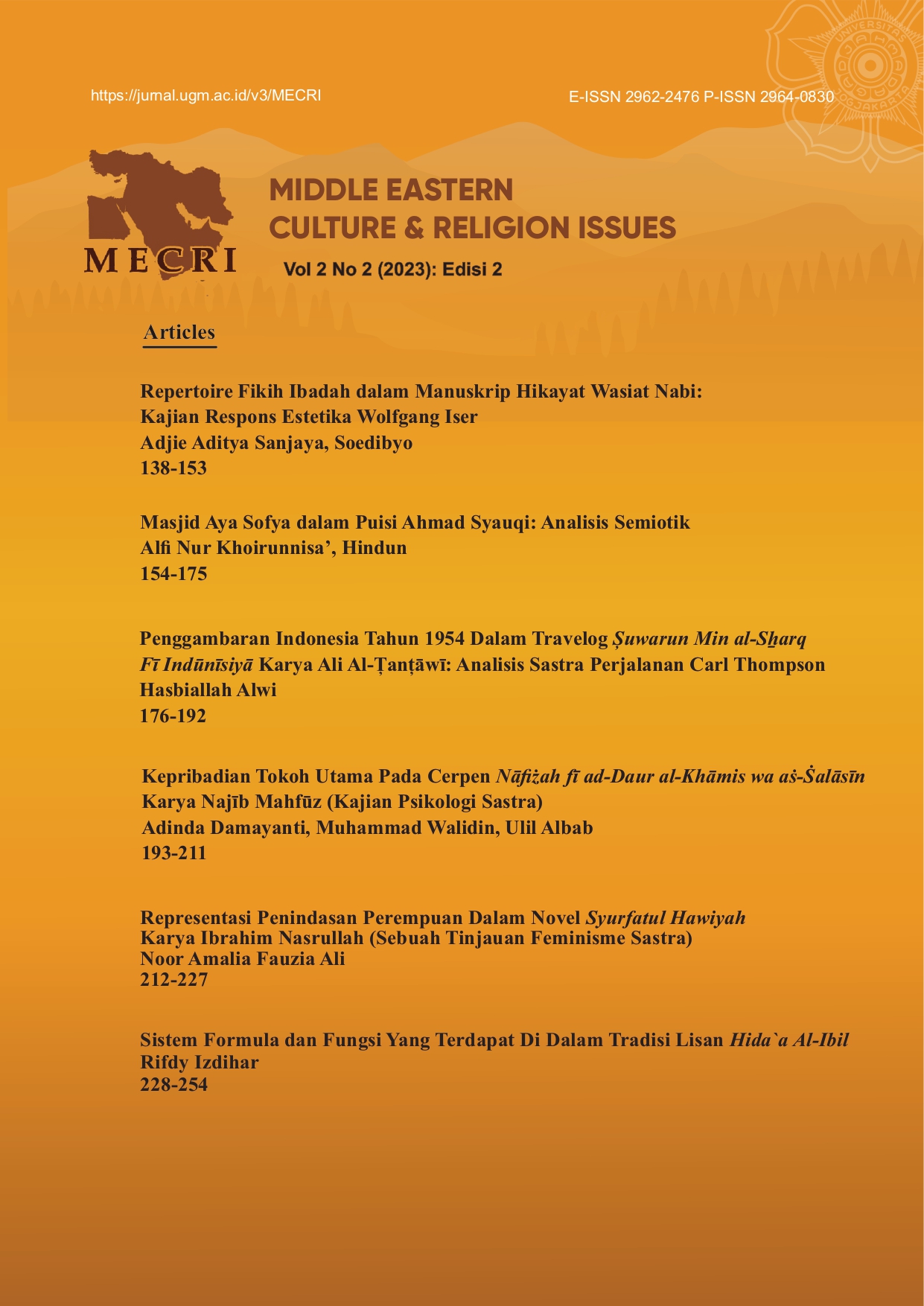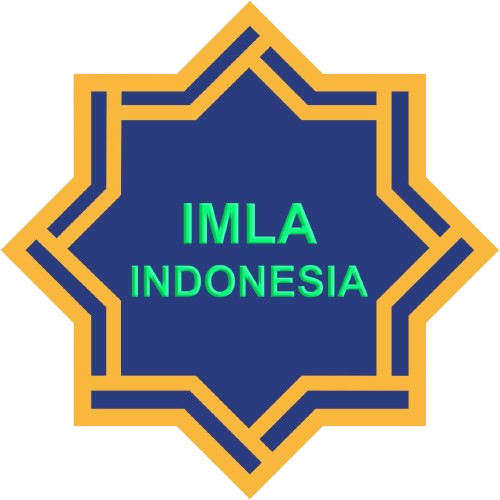Kepribadian Tokoh Utama Pada Cerpen Nāfiżah fī ad-Daur al-Khāmis wa aṡ-Ṡalāsīn Karya Najīb Mahfūz (Kajian Psikologi Sastra)
Abstract
Penelitian ini bertujuan untuk mendeskripsikan kepribadian tokoh utama pada cerpen Nāfiżah fῑ ad-Daur al-Khāmis wa Ṡalāṡῑn karya Najib Mahfuz dengan menggunakan teori psikoanalisis Sigmund Freud. Penelitian ini menggunakan metode deskriptif kualitatif dengan pendekatan psikologi sastra. Hasil penelitian sebagai berikut: Kepribadian tokoh utama dipengaruhi oleh id, ego, dan superego. Id menunjukkan bahwa tokoh utama memiliki kepribadian yang sombong, tidak bertanggung jawab, penakut, emosional, dan nekat. Ego tokoh utama cenderung lemah sehingga membuatnya menjadi pribadi yang bimbang. Superego muncul ketika tokoh utama merasakan empati dan menasehati salah satu tamu undangannya untuk tidak bunuh diri. Ego dan superego tidak dapat menjalankan fungsinya untuk menghambat keinginan id yang mendorong tokoh utama untuk melakukan hal-hal buruk dan nekat. Kepribadian yang tetapkan pengarang pada tokoh utama cerpen Nāfiżah fῑ ad-Daur al-Khāmis wa Ṡalāṡῑn karya Najib Mahfuz telah sesuai dengan indikator fungsi id, ego, dan superego. Pengarang menempatkan kepribadian tokoh utama sesuai dengan aspek id berupa tindakan yang buruk dan agresif. Aspek ego terlihat melalui pengambilan keputusan. Kemudian, aspek superego terdapat pada perilaku yang berkaitan dengan norma dan nilai moral.
References
Bustam, dan Betty Mauli Rosa (2015). Sejarah Sastra Arab dari Beragam Perspektif. Yogyakarta: Deepublish.
Freud, Sigmund (1923). The Ego and The Id. London: The International Psycho-analytical Library.
Freud, Sigmund (1913). The Interpretation of Dreams. New York: The Macmillan Company.
Hall, Calvin S (2019). Psikologi Freud. Yogyakarta: IRCiSoD.
Hamdi, Muhamad (2016). Teori Kepribadian: Sebuah Pengantar. Bandung: Alfabeta.
Mahfuz, Najib (1971). Syahr al-’Asal. Kairo: Darul Shuruq.
Minderop, Albertine (2011). Psikologi Sastra: Karya Sastra, Metode, Teori, dan Contoh Kasus. Jakarta: Yayasan Pustaka Obor Indonesia.
Osborn, Reuben (2021). Marx and Freud. Yogyakarta: IRCiSoD.
Kusumajati, Aryani (2008). ‘Al-Qis}ah Al Qas}i>rah Mauqifu Wada’ Li Naji>b Mahfu>z (Dirasah Tahliliyah Sikolojiyah)’. UIN Sunan Kalijaga. https://digilib.uin-suka.ac.id/id/eprint/1275/.
Milson, Menahem (1972). ‘An Allegory of The Social and Cultural Crisis in Egypt: Walid Al-Ana by Najib Mahfuz’, International Journal of Middle East Studies, 3.3, 324–47. https://www.jstor.org/stable/162802.
Nurudin, Muhammad (2015). ‘Pemikiran Nasionalisme Arab Gamal Abdel Nasser Dan Implikasinya Terhadap Persatuan Umat Islam Di Mesir’, ADDIN, 9.1. https://journal.iainkudus.ac.id/index.php/Addin/article/view/607.
Situmorang, Dina Evianna (2022). Thesis: Id Dominant of The Main Character 'Gone Girl' by Gillian Flynn: Psychological Approach. Batam: UPB. http://repository.upbatam.ac.id/1604/. Diakses pada 20 Juni 2023.
Widayadi, Tri (2008). ‘Al-Qis}ah Al Qas}i>rah “Syahr Al-A
Copyright (c) 2023 Middle Eastern Culture & Religion Issues

This work is licensed under a Creative Commons Attribution-NonCommercial-ShareAlike 4.0 International License.
Middle Eastern Culture and Religion Issues (MECRI) applies the Creative Commons Attribution-NonCommercial-ShareAlike 4.0 International License, with the copyright on the published articles held by the journal. Authors are required to transmit the copyright to this journal once the articles are accepted. This journal is granted a non-exclusive license to publish the articles as the original publisher, along with the commercial right to publish printed issues for sale. Since this journal applies an open-access mode, authors may post articles published by this journal on personal websites or institutional repositories both prior to and after publication while providing bibliographic details that credit this journal.
By publishing with this journal, the copyright holder grants any third party the lawful right to use their published article to the extent provided by the Creative Commons Attribution-NonCommercial-ShareAlike 4.0 International license.
Subsequently, people are lawfully permitted to share, distribute, remix, adapt, and build upon the published articles for noncommercial purposes only, by providing appropriate credit or attribution (Title, Author, Source, and License of the work), including a link to the license, indicating if any changes were made, and redistribute the derivative outputs under the same license (CC BY-NC-SA 4.0).

















